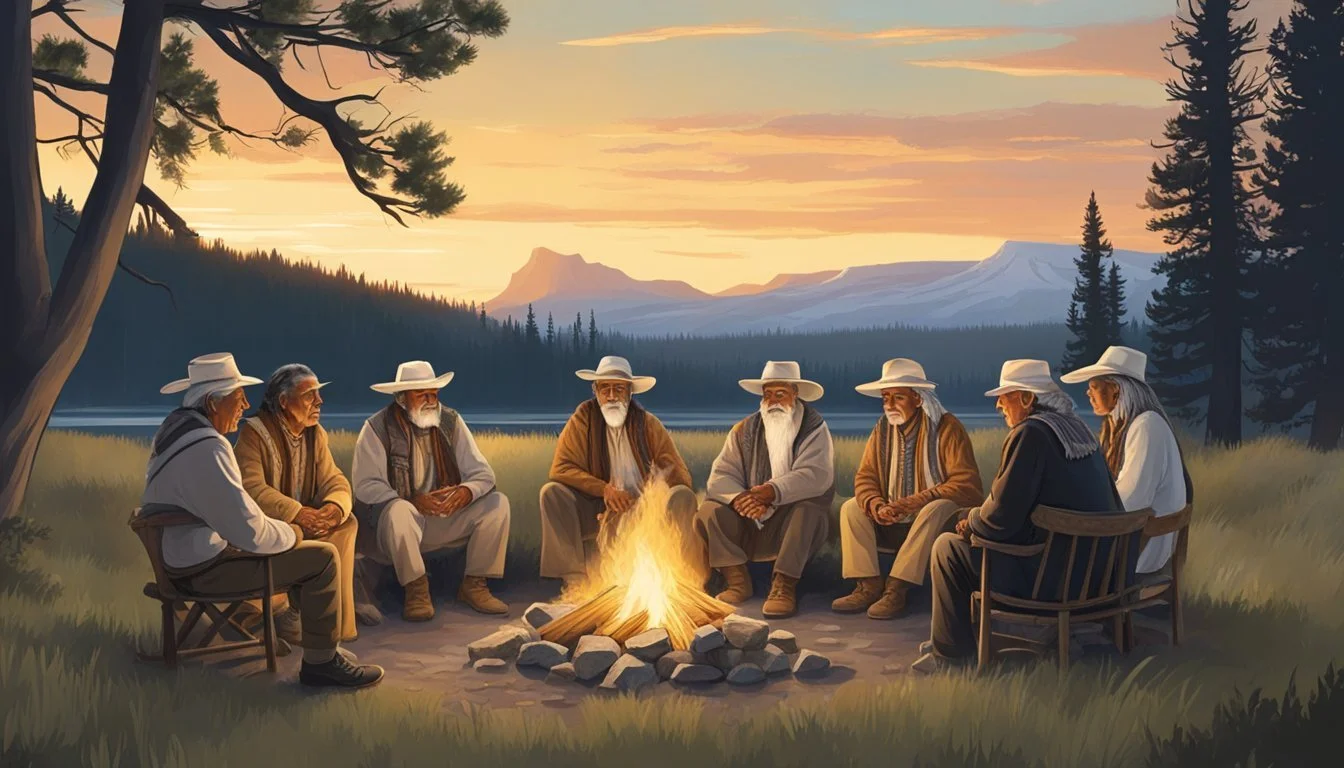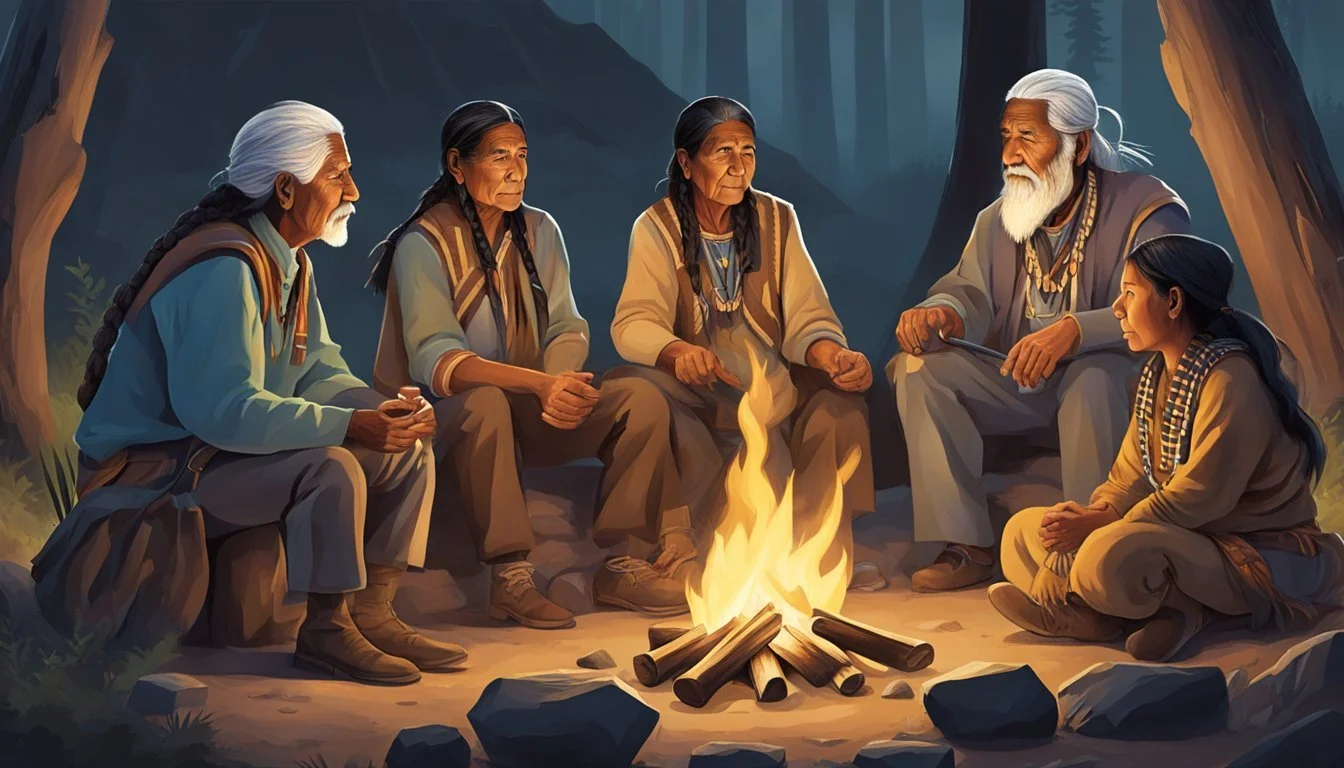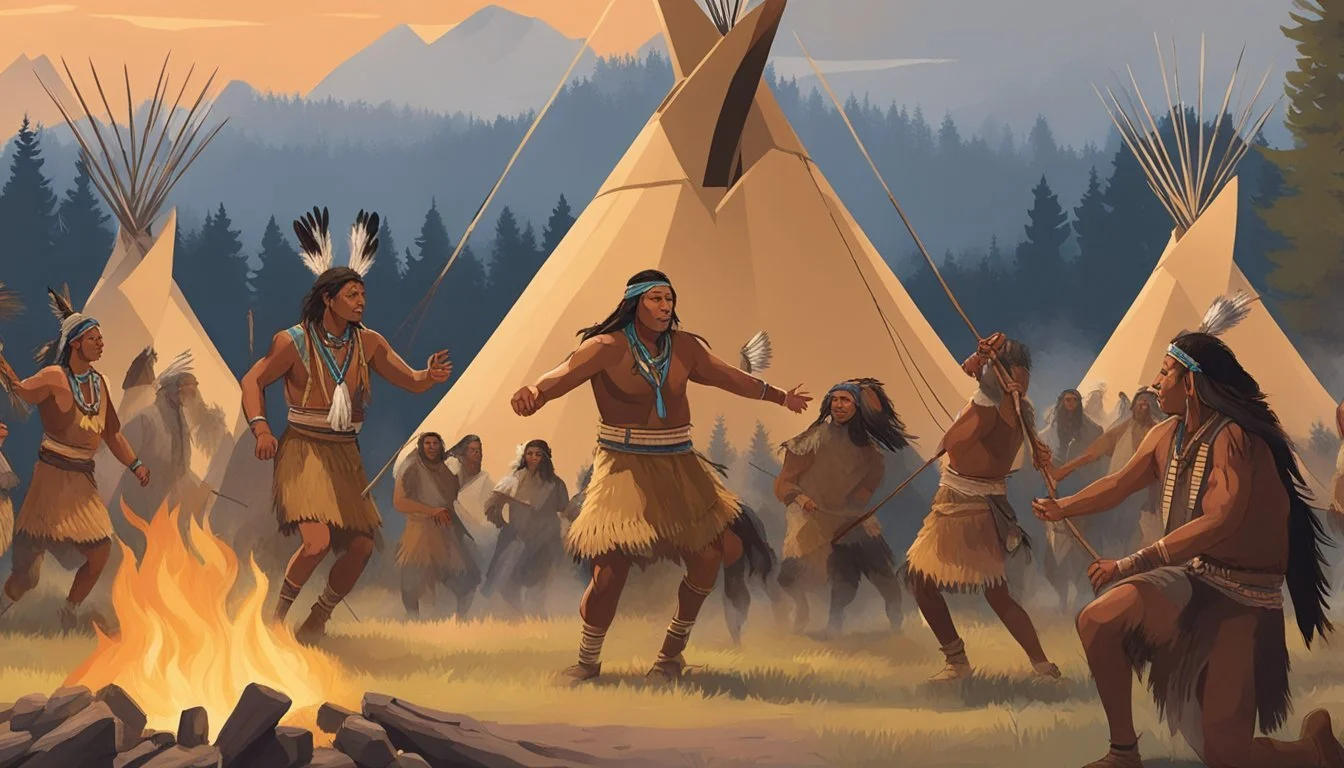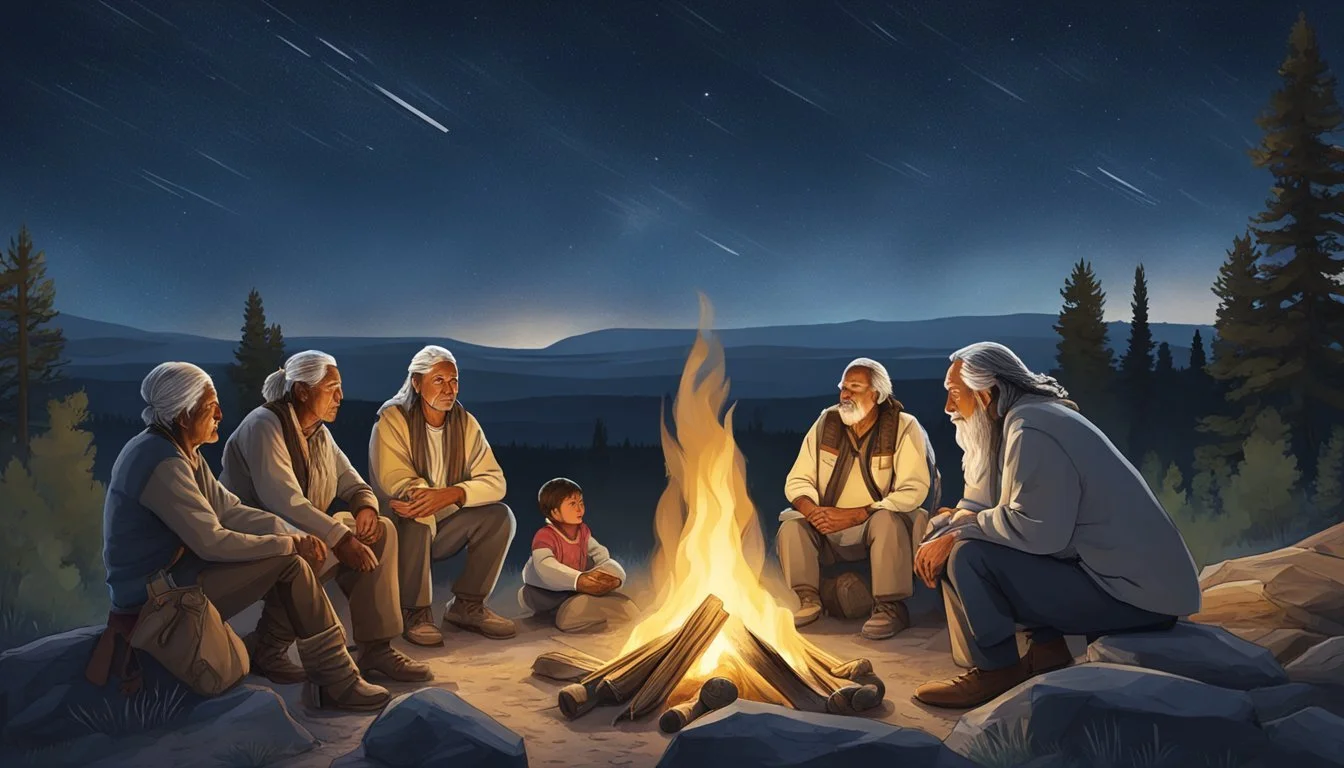Native American Representation in Yellowstone: Accuracy and Impact
Examining Portrayals and Cultural Significance
Yellowstone, the popular television series, has sparked discussions about its portrayal of Native American characters and cultures. The show attempts to include authentic Indigenous representation, featuring characters from the fictional Broken Rock Indian Reservation. While Yellowstone strives for accuracy in some aspects of Native American life, its depiction has faced criticism from Indigenous actors and viewers.
The series' impact on public perception of Native American issues is significant due to its wide viewership. It brings attention to historical injustices and ongoing struggles faced by Indigenous communities. The character of Thomas Rainwater, a prominent Native American figure in the show, offers viewers insight into the complexities of modern tribal leadership and the challenges of preserving cultural heritage.
Yellowstone's approach to Native American representation raises important questions about authenticity in media. The show's creators have made efforts to include Indigenous talent and perspectives, but the portrayal remains a subject of debate. This ongoing conversation highlights the need for continued improvement in the representation of Native American cultures in mainstream entertainment.
The Significance of Representation in Media
Representation in media shapes cultural narratives and influences public perception. It plays a crucial role in reinforcing or challenging stereotypes about Native American communities.
Defining Native American Representation
Native American representation refers to the portrayal of Indigenous peoples, cultures, and stories in various media forms. Accurate representation involves depicting Native characters with depth, authenticity, and cultural sensitivity.
TV shows like "Yellowstone" and "Reservation Dogs" have increased visibility for Native actors and storylines. However, the quality and accuracy of these portrayations vary widely.
Authentic representation requires input from Native communities and creatives. It involves showcasing diverse Indigenous experiences beyond stereotypical roles or historical settings.
Media Influence on Cultural Perception
Media portrayals significantly impact how the general public views Native American cultures and issues. Positive, nuanced representations can foster understanding and empathy.
Stereotypical or inaccurate depictions often reinforce harmful misconceptions. They can perpetuate outdated ideas about Native life and identity.
A study by IllumiNative and USC found that Native-led shows boost advocacy for Indigenous issues. In contrast, non-Native productions may inadvertently promote stereotypes.
Viewers of shows with authentic representation are more likely to support Native American rights and recognize the diversity of Indigenous cultures.
Analyzing Yellowstone's Portrayal of Indigenous Characters
Yellowstone's depiction of Native American characters has sparked discussions about authenticity and representation in television. The show's approach to Indigenous portrayals combines elements of complexity and controversy.
Authenticity of the Dutton Family Narrative
The Dutton family's story intertwines with Native American history in ways that raise questions about historical accuracy. Their multi-generational claim to the land contrasts with Indigenous perspectives on ancestral territories. This narrative tension reflects real-world debates over land rights and cultural heritage.
The show portrays conflicts between the Duttons and local tribes, mirroring historical and ongoing disputes. These storylines offer a glimpse into the complex relationships between ranchers and Native communities in the American West.
Casting Choices and Performances
Yellowstone features Native American actors in prominent roles, including Gil Birmingham as Thomas Rainwater and Kelsey Asbille as Monica Dutton. This casting decision aligns with industry calls for authentic representation.
Birmingham's portrayal of Rainwater has received praise for its nuanced approach to leadership and cultural identity. Asbille's casting as Monica, however, has faced scrutiny due to questions about her Native heritage.
The show's commitment to hiring Native actors for Indigenous roles varies. Some characters are played by performers with verified tribal affiliations, while others are not.
Character Analysis: Thomas Rainwater and Monica Dutton
Thomas Rainwater emerges as a complex figure, balancing tribal interests with personal ambition. His character avoids stereotypical portrayals, presenting a modern Native leader navigating political and economic challenges.
Monica Dutton's character bridges two worlds as a Native woman married into the Dutton family. Her storylines explore cultural identity, family loyalty, and the struggles of maintaining Indigenous connections in a non-Native environment.
Both characters face internal and external conflicts that highlight the multifaceted nature of contemporary Native American experiences.
Depiction of Indigenous Tribes and Communities
Yellowstone's portrayal of tribal life on the Broken Rock Reservation mixes authenticity with dramatization. The show touches on real issues facing Native communities, such as economic development, cultural preservation, and sovereignty.
Tribal ceremonies and traditions appear in the series, offering viewers glimpses of Indigenous culture. The accuracy of these depictions varies, with some scenes praised for their respectful approach and others criticized for oversimplification.
The show's treatment of inter-tribal politics and the complexities of modern reservation life adds depth to its Indigenous narratives. However, some critics argue that certain storylines reinforce stereotypes or oversimplify complex tribal issues.
Cultural and Political Context in Yellowstone
Yellowstone explores complex cultural and political dynamics surrounding Native American communities in Montana. The show delves into issues of land rights, tribal relations, and the ongoing impact of Western expansion.
Land Rights and Ownership
The series highlights the contentious nature of land ownership in Montana. The fictional Broken Rock Indian Reservation faces constant pressure from outside interests seeking to exploit their territory. This mirrors real-world struggles of Native tribes to maintain control over their ancestral lands.
The Dutton ranch, central to the show's plot, occupies land with historical ties to local tribes. This creates tension between the Duttons and Native characters, reflecting actual disputes over territory and resources in the American West.
Yellowstone depicts legal battles and negotiations over land use, showcasing the complex interplay between tribal sovereignty, state laws, and federal regulations.
Representation of Inter-Tribal Relations
Yellowstone portrays interactions between different Native groups, though critics argue these depictions sometimes lack nuance. The show features characters from various tribes, including the fictional Broken Rock tribe.
Inter-tribal politics play a role in storylines, with alliances and conflicts emerging between Native characters. These narratives touch on real issues faced by Native communities, such as resource allocation and political representation.
The series attempts to show diversity within Native cultures, but some viewers feel it falls short of capturing the full complexity of modern tribal relations in Montana.
The Impact of Western Expansion Narratives
Yellowstone grapples with the legacy of Western expansion and its effects on Native peoples. The show's setting in Montana serves as a backdrop for exploring historical trauma and ongoing cultural clashes.
Characters often reference past injustices, including forced relocation and broken treaties. This narrative thread connects historical events to present-day conflicts over land and resources.
The series portrays Native characters fighting to preserve their traditions while navigating a rapidly changing world. This struggle reflects real challenges faced by Native communities in maintaining cultural identity amid external pressures.
Yellowstone's depiction of Western mythology sometimes reinforces stereotypes, but it also attempts to challenge simplistic narratives about the American frontier.
Behind the Scenes: Crafting Yellowstone's Narrative
The creation of Yellowstone's narrative involves careful consideration of cultural representation and Native stories. Taylor Sheridan and the writing team work to balance authenticity with compelling storytelling.
Role of Creators and Writers
Taylor Sheridan, Yellowstone's creator, brings a unique perspective to the show's development. His experience with Native American themes in previous works like Wind River informs the portrayal of Indigenous characters in Yellowstone.
The writing team faces the challenge of weaving Native American storylines into the broader narrative. They strive to create complex, three-dimensional Indigenous characters that avoid stereotypes.
Sheridan and the writers aim to highlight contemporary Native American issues while maintaining the show's entertainment value. This delicate balance requires ongoing research and sensitivity to cultural nuances.
Consultation with Indigenous Experts
To ensure accuracy in cultural representation, Yellowstone's production team consults with Native American advisors. These experts provide insights into traditions, language, and contemporary issues facing Indigenous communities.
The show employs Native American actors for key roles, contributing to authentic portrayals. Gil Birmingham, who plays Thomas Rainwater, brings his personal experience as a Comanche to the character.
Cultural consultants review scripts and provide feedback on costumes, set design, and dialogue. This collaborative process helps minimize inaccuracies and promotes respectful depiction of Native cultures.
Influence of Historical Events
Yellowstone's narrative draws inspiration from historical events and ongoing conflicts between Native Americans and non-Native interests. The show explores land rights issues, echoing real-world disputes over tribal territories.
The writers incorporate elements of Native American history to add depth to character backstories and motivations. This approach provides context for the complex relationships between Indigenous and non-Indigenous characters.
Contemporary issues facing Native communities, such as economic development and preservation of cultural heritage, influence storylines. By addressing these topics, Yellowstone aims to reflect the modern Native American experience.
Native American Actors in Yellowstone
Yellowstone features several Native American actors who bring authenticity and depth to their roles. These performers contribute significantly to the show's portrayal of Indigenous characters and culture.
Achieving an Accurate Portrayal Through Authentic Acting
Native American actors in Yellowstone draw from their personal experiences and cultural knowledge to create genuine performances. This authenticity helps avoid stereotypes and presents a more nuanced representation of Indigenous peoples.
The actors work closely with cultural advisors to ensure accuracy in language, customs, and traditions. This collaboration results in performances that resonate with Native American viewers and educate non-Native audiences.
The show's commitment to casting Native American actors in Native roles has been praised for promoting cultural integrity and providing opportunities for Indigenous talent in the entertainment industry.
Prominent Native American Actors in the Series
Gil Birmingham, of Comanche descent, portrays Thomas Rainwater, a powerful tribal leader. Birmingham's performance brings gravitas and complexity to his character's political and cultural struggles.
Martin Sensmeier, who is Tlingit and Koyukon-Athabascan, plays Martin, a skilled horseman and ranch hand. Sensmeier's portrayal highlights the diversity of Native American experiences in modern settings.
Lily Gladstone, of Blackfeet and Nez Perce heritage, delivers a nuanced performance as Angela Blue Thunder. Her character showcases the intellectual and strategic capabilities of Native American women in leadership roles.
These actors, along with others in the cast, contribute to a more accurate and diverse representation of Native Americans on television.
Assessing the Societal Impact of Yellowstone's Narrative
Yellowstone's portrayal of Native American characters and themes has sparked discussions about representation and cultural authenticity. The show's influence extends beyond entertainment, shaping public perceptions and highlighting the need for nuanced depictions of indigenous communities.
The Show's Reception Within Indigenous Communities
Native American viewers have expressed mixed reactions to Yellowstone's portrayal of their culture. Some appreciate the inclusion of indigenous characters in prominent roles, such as Thomas Rainwater. Others criticize the show for perpetuating stereotypes and oversimplifying complex issues.
The character of Thomas Rainwater has garnered particular attention. While some praise the depth given to his storyline, others argue that his portrayal falls short of accurately representing indigenous leadership and values.
Concerns have been raised about the show's handling of sensitive topics like land rights and tribal sovereignty. Critics argue that these issues are often simplified for dramatic effect, potentially undermining real-world efforts to address indigenous rights.
Changes in Public Awareness and Attitudes
Yellowstone has undeniably increased mainstream awareness of contemporary Native American issues. The show's popularity has brought topics like land disputes and tribal politics to the forefront of public discourse.
Viewers unfamiliar with indigenous cultures may gain new insights, albeit through a fictionalized lens. This exposure can spark interest in learning more about Native American history and current challenges.
However, there are risks associated with this increased visibility. Inaccurate portrayals might reinforce existing stereotypes or create new misconceptions about indigenous communities.
The show's impact on public attitudes toward Native American culture remains a subject of debate. While it may foster empathy and understanding among some viewers, others may develop skewed perceptions based on dramatized narratives.
Comparative Analysis
"Yellowstone" stands out in its portrayal of Native Americans compared to other media depictions. Its approach offers both strengths and limitations in representing Indigenous peoples and cultures.
Yellowstone Within the Broader Entertainment Industry
"Yellowstone" has made strides in Native American representation compared to many other TV shows and films. It features Indigenous actors in prominent roles and attempts to address complex issues facing Native communities. The series explores themes of land rights, cultural preservation, and tribal politics.
However, "Yellowstone" still faces criticism for perpetuating some stereotypes and simplifying Native experiences. Its portrayal, while more nuanced than many predecessors, falls short of fully authentic representation.
The entertainment industry has historically struggled with accurate Indigenous portrayals. "Yellowstone" represents progress but also highlights ongoing challenges in achieving fair and comprehensive representation.
Similar Works and Their Representation
Films like "The Revenant" have also attempted to depict Native American characters with more depth and authenticity. "The Revenant" received praise for its casting of Indigenous actors and attention to cultural details.
TV series such as "Reservation Dogs" and "Rutherford Falls" offer more contemporary portrayals of Native life. These shows, created by Indigenous writers and featuring Native casts, provide more authentic perspectives.
Compared to these works, "Yellowstone" occupies a middle ground. It offers more complex Native characters than traditional Western narratives but lacks the insider perspective of Indigenous-led productions.
The varying approaches highlight the importance of Native involvement in storytelling to achieve accurate portrayals and challenge long-standing stereotypes in the entertainment industry.
Conclusion
Yellowstone's portrayal of Native American characters has sparked important conversations about representation in media. The show has made efforts to include Indigenous perspectives, though opinions on its accuracy remain mixed.
Some praise Yellowstone for featuring Native actors in prominent roles and exploring themes around land rights and cultural heritage. Others criticize certain depictions as stereotypical or lacking nuance.
The series has undoubtedly raised awareness of Indigenous issues among a wide audience. It has prompted viewers to consider the complex history and present-day realities of Native American communities.
Yellowstone's impact extends beyond entertainment. It has highlighted the need for more diverse Native American representation both on and off screen.
As the TV landscape evolves, Yellowstone's approach to Indigenous characters may serve as a case study. Future productions can learn from both its successes and shortcomings in portraying Native experiences.
Ultimately, Yellowstone has contributed to an ongoing dialogue about authentic representation. It underscores the importance of including Indigenous voices in storytelling about their own communities.







